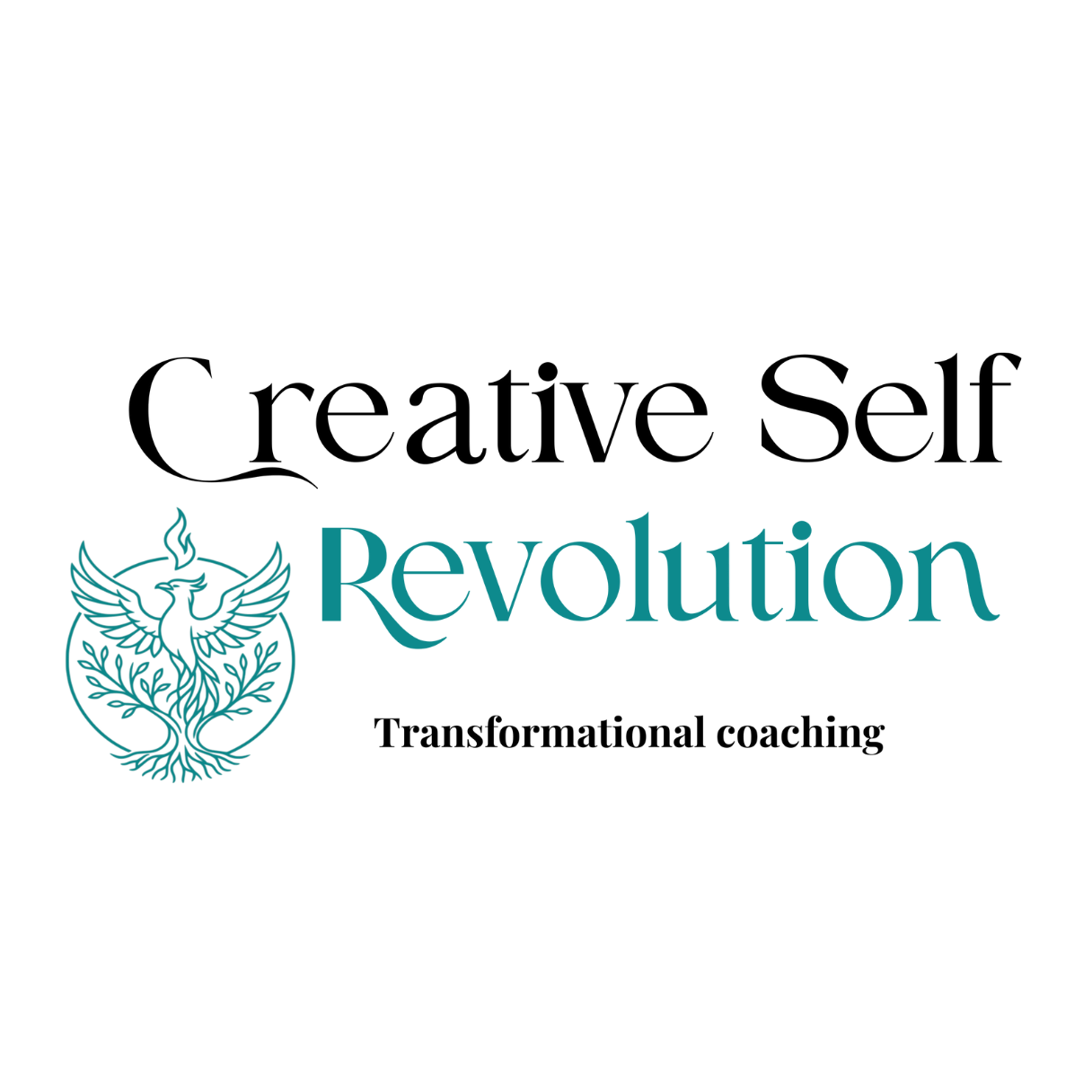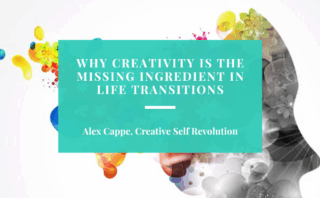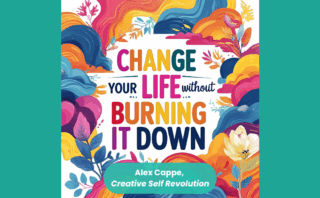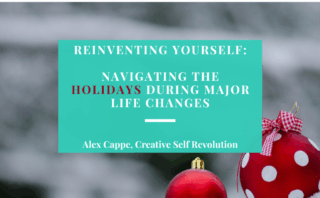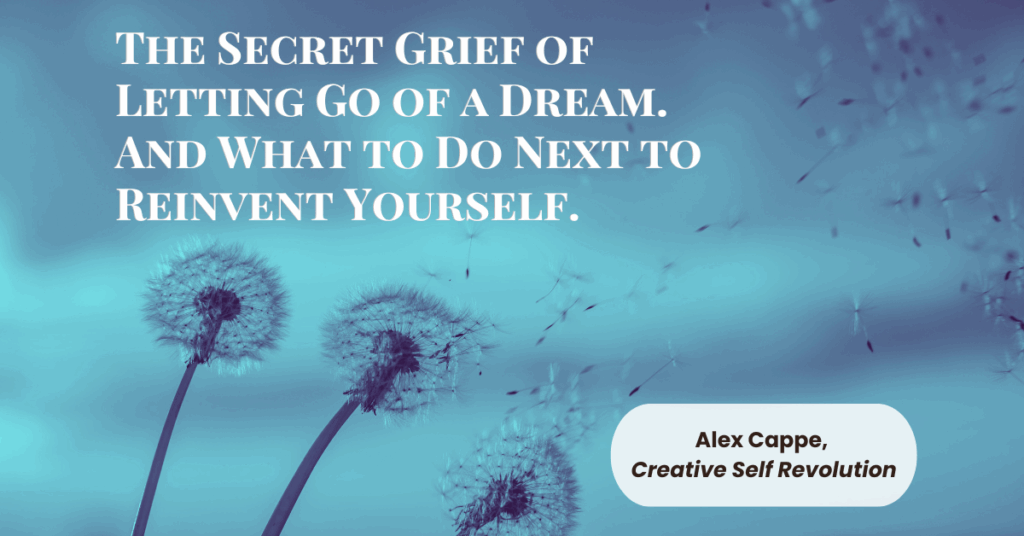
Losing a dream can feel like losing your identity. But it can also be the moment you begin to reinvent yourself on your own terms.
The death of a dream rarely announces itself with ceremony. Sometimes it’s dramatic: the phone call that didn’t come, the diagnosis that changed everything, the rejection that finally broke through your optimism.
But oftentimes, it’s a slow erosion – you’ve been watching the dream slip away while you desperately tried to hold on. Or perhaps you’ve been slowly letting it die, gradually becoming someone else, someone safer, someone society says you should be instead of who you actually are.
Unlike other losses, there’s no funeral and no socially acceptable grieving period. You’re left holding the invisible weight of a future that will never come to pass.
It’s painful in a way nothing else is.
This isn’t the grief you know. This isn’t losing someone who existed; it’s losing someone you were supposed to become. And in that loss, you’re forced to reinvent yourself and confront fundamental questions:
- Who are you without this dream?
- What do you actually want now?
- Why do you want it?
- What difference do you want to make in the world?
Stage 1: The Knowing (And the Denial Dance)
An uncomfortable truth is that a part of you usually knows when a dream is dying long before you’re ready to admit it. The signs accumulate like storm clouds: the opportunities that keep slipping away, the energy that’s harder to summon each morning, the way your stomach drops when people ask about your progress. But knowing and accepting are two different things.
The denial phase isn’t weakness; it’s often survival. Your psyche protects you from the full weight of the loss by allowing you to live in the space between knowing and accepting. You might find yourself making increasingly desperate attempts to resurrect what’s already gone, or constructing elaborate explanations for why things haven’t worked out yet.
The crucial question becomes: When do you keep fighting, and when do you let go? This is where getting to the core of who you are becomes essential. You need to separate what you genuinely want NOW from what you think you should want, or used to want, and understand what actually matters the most to you at your core.
The Keep Fighting Indicators:
- The core desire remains strong: When you strip away the external pressures and expectations, you still genuinely want this – and more importantly, you can articulate why it matters to you specifically.
- You’re learning and growing: Even in the struggle, you’re developing skills, insights, or resilience that align with your values and the difference you want to make.
- You have energy for creative problem-solving: You’re still able to brainstorm new approaches, pivot strategies, or find alternative paths.
- The dream aligns with your deepest values: The pursuit still feels meaningful when you examine your core motivations and the impact you want to have.
The Let Go Indicators:
- You’re fighting for the idea of the dream, not the dream itself.
- The cost has become unsustainable: The pursuit is damaging your health, relationships, or other areas of life in ways that no longer serve who you want to become.
- You’re repeating the same strategies expecting different results:
- The dream has become about proving something: You’re more motivated by showing others (or yourself) you can do it than by the actual difference it would make.
- Your core values have shifted: What you wanted at 15 might not align with who you are at 35, and that’s not failure, it’s a form of growth.
The hardest part is that these indicators can coexist. You might still love the core of what you wanted while recognizing that the specific path you’ve been on isn’t serving you anymore. This is where working with a life reinvention coach can be invaluable when you want to reinvent yourself – a coach like me can help you navigate these complex questions and distinguish between authentic desires and inherited expectations, and untangle old desires from what you truly want now.
Stage 2: The Bargaining Maze

Once you begin to sense the dream’s mortality, your mind can become a frantic architect, redesigning the blueprint of your life to accommodate the new reality while somehow keeping the dream alive. This is the bargaining phase, and it’s exhausting.
You might frantically seek alternative routes to the same destination. If you can’t be a doctor, maybe you can be a nurse practitioner. If you can’t have biological children, perhaps adoption is the answer. If you can’t make it as a professional musician, maybe you can teach music. The energy you pour into these alternatives is intense and often unsustainable.
You can become a contortionist of possibility, twisting yourself into increasingly uncomfortable positions to keep the essence of your dream alive.
The danger here isn’t the exploration itself – sometimes these alternatives genuinely work. The danger is when pivoting becomes a compulsive behavior, when you’re so afraid of sitting with the loss that you immediately leap to the next possibility without processing the grief of the current one.
Here’s what helps:
- Set a time limit on bargaining. Give yourself permission to explore alternatives for a specific period, maybe 3 months, and then require yourself to pause and assess.
Ask yourself: “Am I exploring these options because they genuinely excite me and align with who I am becoming as I reinvent myself, or because I’m afraid to face the loss of my original dream?” This is another place where it’s helpful to work with a life reinvention coach who can help you distinguish between authentic new directions and elaborate avoidance strategies.
Stage 3: The Rage Phase
Anger is the most misunderstood stage of dream death. We’re conditioned to see anger as negative, destructive, or unseemly, especially when it comes to our own disappointments. But anger is actually a sign that you’re moving from denial toward acceptance. It means you’re starting to grasp the reality of your loss.
The fury might come in waves. You may be angry at the unfairness of it all, at the people who seemed to achieve your dream effortlessly or immediately, at the Universe for seemingly dangling something in front of you only to snatch it away. You may be angry at yourself for believing it was possible, and simultaneously angry at yourself for giving up. You may be angry at friends who offer platitudes like “everything happens for a reason” and “when one door closes, another opens”.
You is that you might also feel rage toward people who are still living your dream. Seeing others succeed in your former field can feel like salt in an open wound. This is normal, but it’s also information about where you are in the process.
The guilt about feeling angry can compound the problem. You might tell yourself you’re being petty, that others have “real problems,” that you should be grateful for what you have. But comparing your grief to others’ doesn’t diminish it – it just adds shame to an already difficult process.
Productive anger looks different from destructive anger. Productive anger mobilizes you toward action, while destructive anger leaves you stuck in bitterness.
It’s a good idea to channel your anger into something tangible. The goal isn’t to eliminate the anger, it’s to transform it into something that serves you rather than consuming you.
Stage 4: The Numbness
After the emotional intensity of bargaining and rage comes something unexpected: nothing. The numbness phase is characterized by a strange emotional flatness where you stop caring about anything, not just the lost dream. Food tastes bland. Movies you once loved feel pointless. Even good news from friends can feel distant and irrelevant.
This phase can be disorienting because it feels like depression, but it’s actually a form of emotional protection. Your psyche is giving you a break from the intensity of grief. Think of it as psychological anesthesia – necessary for healing, but not permanent.
The weird relief of emotional flatness can actually be restorative. After months of emotional extremes, the numbness can feel like a vacation. You’re not crying anymore, you’re not constantly thinking about what you’ve lost, and you’re not frantically searching for alternatives. You’re just existing.
It’s important to try not to use destructive means to numb yourself further during this phase. You don’t want to rely on a crutch that will be extremely difficult to let go of.
Numbness isn’t failure – it’s space. And in that space, the idea that you might reinvent yourself starts to quietly take root.
This phase serves a crucial purpose: it creates space for integration. Without the constant noise of intense emotion, you can begin to observe your experience more objectively. You might notice patterns you missed before, or gain clarity about what you actually want moving forward.
The key in this phase, like all the phases, is recognizing them as phases rather than a permanent state as you reinvent yourself.
Stage 5: The Archaeology Phase
Eventually, something shifts. The emotional fog begins to lift, and you find yourself curious about the wreckage of your former dream. This is the archaeology phase, where you dig through the rubble to find what’s salvageable.
You start to examine why the dream mattered to you in the first place. Was it the work itself you loved, or the recognition it would bring? Was it being adored by others to make up for not feeling like “enough” yourself? Was it your genuine passion, or something you thought you should want? This excavation is about getting to the core of who you are and what you actually value.
This excavation when you reinvent yourself often reveals surprising discoveries. The aspiring novelist realizes they actually loved the research more than the writing. The would-be doctor discovers their true passion was for advocacy, not medicine. The entrepreneur understands they were drawn to the problem-solving aspect of business, not the financial rewards. Each discovery brings you closer to understanding your authentic desires and the difference you want to make NOW, not when you started pursuing the dream.
You might also uncover which parts of the dream were actually yours versus society’s expectations. This process of separation is crucial for understanding who you are without external pressures.
The skills you developed while pursuing your dream don’t disappear just because the dream itself is gone. These become part of your unique toolkit for whatever comes next.
Perhaps most importantly, you begin to understand the deeper currents that drove your dream. What difference did you want to make in the world? What problems did you want to solve? What kind of impact did you want to have on people’s lives? These core motivations – the real you underneath the specific dream – often survive the death of the particular path and can guide you toward something new.
A life reinvention coach can help you get true clarity on these questions to reinvent yourself and guide you on a path forward.
Stage 6: The Creative Reconstruction
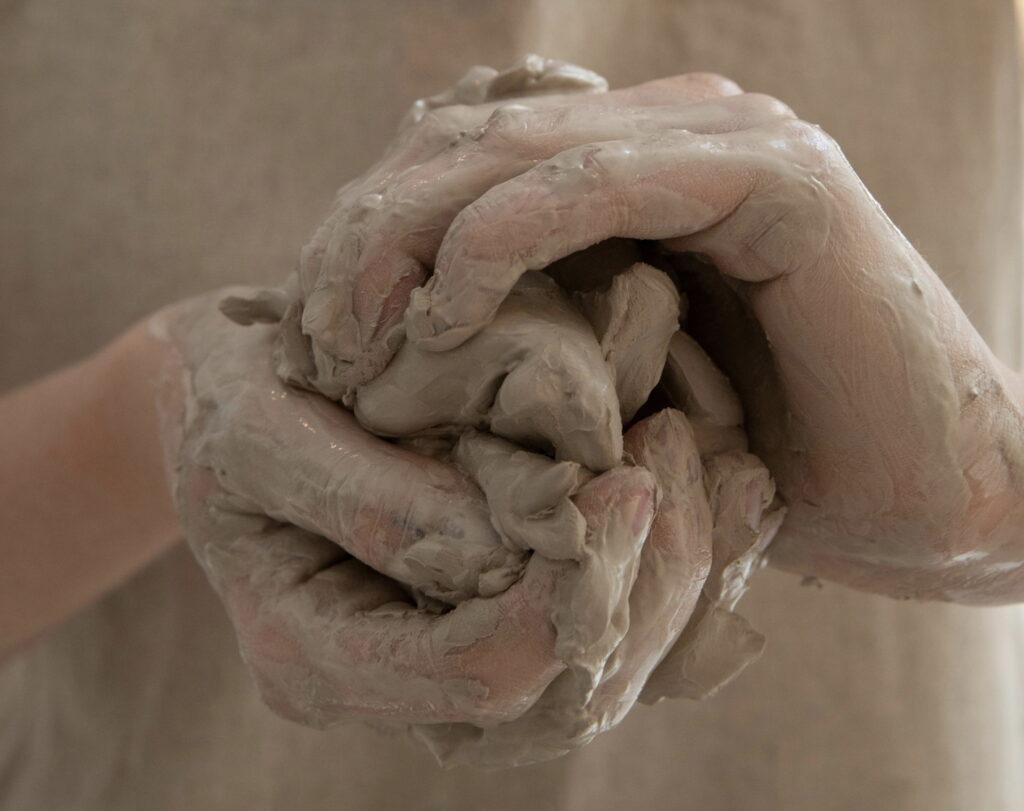
Integration doesn’t mean you’re “over it” or that you never think about what might have been. It means you’ve done the internal work – often deeply creative work – and you’re ready to reinvent yourself by discovering what you actually want now, why you want it, and what difference you want to make in the world today. The world changes and we change, and it’s ok to allow things to shift.
This is where the real magic happens when you reinvent yourself. With the pressure of the old dream lifted, you have space to explore what genuinely calls to you now. Not what you think you should want, not what would impress others, not what would vindicate your past struggles, but what actually lights you up now.
The reconstruction phase often involves creativity. You might find yourself drawn to writing, painting, music, or other artistic pursuits as ways to process your experience and explore new possibilities. Creative outlets provide a unique ability to help us bypass our logical mind and access deeper truths about what we want and who we’re becoming.
This isn’t about finding a “replacement dream” or filling the void left by the old one. It’s about building something entirely new from the ground up, informed by your experience, not constrained by it. You might discover that your true calling is something you never would have considered while you were focused on your original dream. It could be something that aligns more authentically with who you are now and what you want to make better in the world.
This process can be challenging to navigate alone, which is why many people find it helpful to work with a life reinvention coach during this phase. A skilled coach can help you explore these new possibilities as you reinvent yourself without the pressure to immediately commit to anything, and can support you in distinguishing between authentic callings and rebound dreams.
The person you are now, shaped by both the pursuit and the loss, has unique perspectives, skills, and insights that the person who originally had the dream didn’t have.
This new version of you is capable of wanting things and creating things that weren’t accessible before. When you approach this phase with curiosity, it can be an amazing adventure.
Sometimes this leads to work that’s completely different from your original dream. Sometimes it leads to adjacent fields that scratch the same itch in new ways. Sometimes it leads to combining elements of your former dream with entirely new interests in ways that create something yours in your own special way.
The key is trusting the process of discovery, even if it feels longer than you hoped, rather than forcing outcomes. This phase requires patience with yourself and the process about what wants to emerge.
The Reality: You’ll Cycle Through These Stages
Like other types of grief, the process of dream death isn’t linear. You don’t move through these stages like climbing stairs, checking each one off as you go. Instead, you cycle through them, sometimes multiple times in a single day.
You might wake up feeling integrated and at peace, then see a news article about someone succeeding in your former field and suddenly find yourself back in the rage phase. You might spend months in the numbness phase, then trigger back into bargaining when you hear about a new opportunity. This cycling is normal and doesn’t mean you’re failing.
Trigger moments can send you backward, and recognizing them can help you navigate them more skillfully as you reinvent yourself.
What’s important is learning to recognize which stage you’re in and what you need in that moment:
- When you’re in the rage phase, you need outlets and safe spaces to express anger.
- When you’re in the numbness phase, you need gentleness and minimal expectations.
- When you’re in the archaeology phase, you need time and space for reflection as you reinvent yourself.
Some Dreams Do Die – And That’s Not a Failure
Let’s be honest about something that other advice rarely acknowledges: some dreams do die. And that’s not a failure of imagination, persistence, or faith. It’s simply what happens sometimes.
The dream of becoming a professional athlete might die with a career-ending injury. The dream of building a particular business might die with market changes that make it impossible. The dream of being a famous artist may never reach the level you initially hoped for. These losses are real, and they deserve to be grieved fully.
Accepting that some dreams die isn’t pessimistic, it’s realistic. And it’s also liberating. When you stop trying to resurrect something that’s truly gone, you free up enormous amounts of energy that can be redirected toward what’s actually possible now.
The work here is about getting to the core of who you are, what you want now, why you want it, and the impact you want to have. These deeper desires often survive the death of specific dreams and can guide you toward something more aligned with who you’re becoming than what you originally wanted.
The creative work of discovering who you are beneath the dream as you reinvent yourself – through writing, art, deep reflection, or other exploratory practices – can become the foundation for whatever comes next.
This process of creative self-discovery can reveal aspects of yourself that were hidden while you were focused on a single path, opening up possibilities you never would have considered before. And that’s a good thing.
Ready to Discover What’s Next?
If you’re navigating the death of a dream and feeling ready to reinvent yourself, explore who you are and what you want now, I’d love to support you with a complimentary Life Reinvention Strategy Call.
In this session, we’ll work together to:
- Uncover and connect to what truly drives you now (it may be different than before)
- Create a vision for your future that actually energizes you
- Build a map for your path forward with intention and momentum
Limited spots available. Schedule your free call here

Alex Cappe, founder of Creative Self Revolution, specializes in guiding clients through the life-changing process of personal transformation. Many people know what they want to escape from, but struggle with what they truly want to create. In her coaching practice, she provides the structured process, creative exercises and a compassionate, objective perspective to distinguish between your core identity and the adaptive patterns that no longer serve you as you reinvent yourself. If you’re ready to move from reactive change to intentional evolution, book a complimentary life reinvention session today. We’ll begin the work of building a bridge from your past experiences to the fulfilling future you want to create!
